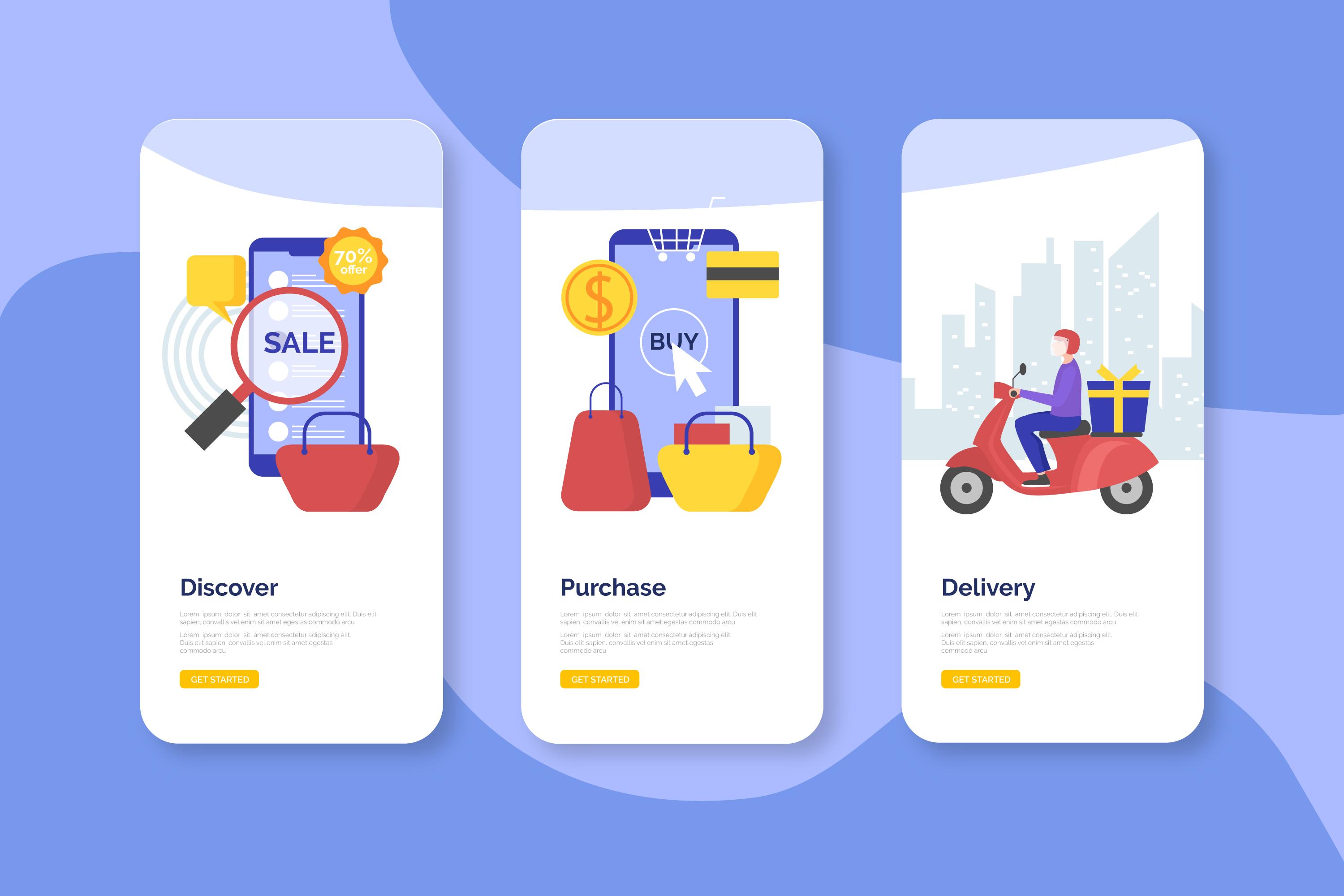Unpacking the Infrastructure of On-Demand Delivery Apps

In recent years, on-demand delivery apps have significantly transformed how consumers interact with goods and services. Whether it is food, groceries, medicine, or courier services, the convenience of placing an order through a mobile app and having it delivered quickly has become a standard expectation. However, behind this seemingly simple user experience is a complex infrastructure that powers every tap, click, and notification. This blog unpacks the technical and operational foundation of on-demand delivery app development to provide a detailed look into what makes these applications efficient and successful.
Understanding the Core Components of Delivery App Architecture
On-demand delivery app development involves integrating various core components that work in harmony to deliver a smooth and reliable user experience. These components include the customer app, delivery partner app, and the admin panel. Each of these modules has its own set of functionalities, user interfaces, and back-end services that must be meticulously planned and developed.
The customer app focuses on browsing items, placing orders, real-time tracking, and making payments. The delivery partner app helps couriers receive order notifications, navigate to destinations, and update statuses. The admin panel enables business owners to manage operations, monitor analytics, and maintain service quality. A seamless integration of all these parts is crucial for successful delivery app functionality.
Key Features That Drive On-Demand Delivery Applications
For any on-demand delivery app to stand out in the competitive market, it must include a set of core and advanced features designed for efficiency and user satisfaction. The must-have features typically include:
-
User registration and profile management
-
Real-time GPS tracking and navigation
-
Multiple payment gateway integration
-
In-app chat and push notifications
-
Ratings and feedback system
-
Dynamic pricing and order history
-
Delivery time estimation and scheduling
Advanced features such as route optimization, predictive analytics, AI-based dispatching, and voice command capabilities are increasingly being integrated to enhance user experience and streamline operations.
Choosing the Right Technology Stack for Reliable Performance
Technology choices play a significant role in the performance, scalability, and maintainability of an on-demand delivery app. Selecting the right tech stack depends on various factors including the target audience, platform (iOS, Android, or cross-platform), and expected scale.
For the front end, technologies like React Native or Flutter are popular for building cross-platform apps. Backend development often relies on frameworks such as Node.js, Django, or Laravel, depending on the project’s requirements. For real-time features, WebSocket and MQTT protocols are widely used. Cloud platforms like AWS or Google Cloud are essential for storage, hosting, and security. The database systems can include PostgreSQL, MongoDB, or Firebase, depending on scalability and complexity needs.
Backend Infrastructure and Cloud Integration Essentials
The backend infrastructure is the backbone of any on-demand delivery app. It handles user authentication, manages order workflows, processes payments, maintains communication between customer and delivery agent, and stores all user and order data.
Cloud services play a crucial role in ensuring scalability and data management. Using cloud infrastructure allows automatic scaling during peak hours, efficient load balancing, and robust data recovery options. Integration of Content Delivery Networks helps ensure faster loading times, while services like Firebase or AWS Amplify offer real-time data synchronization capabilities, essential for features like live order tracking and status updates.
Role of APIs and Third-Party Integrations in Delivery Apps
APIs and third-party service integrations are essential in reducing development time and enhancing app capabilities. Payment gateways like Stripe, Razorpay, and PayPal offer secure transaction options. For location-based services, Google Maps API or Mapbox is commonly integrated for accurate tracking and routing.
SMS and notification services such as Twilio and Firebase Cloud Messaging help in communication. In some cases, AI-driven chatbots are integrated to handle basic customer queries. Using these APIs improves the overall efficiency of the app and ensures that the development team can focus more on business-specific features.
Managing Real-Time Location and Order Tracking Effectively
One of the critical aspects of any delivery app is the ability to provide accurate real-time location tracking. GPS tracking systems allow both customers and admins to monitor the exact location of a delivery agent. This feature not only builds trust with users but also helps delivery personnel optimize their routes.
To implement this, developers integrate mapping APIs and utilize mobile sensors to provide constant updates. Geo-fencing capabilities can be used to trigger automated actions like notifying customers when the delivery agent is near their location. This reduces communication overhead and ensures smoother deliveries.
Scalability Planning and Database Management for Growth
As user demand grows, the delivery app infrastructure must be ready to handle a large number of simultaneous users and transactions. Scalability planning begins at the architectural level with the use of microservices and containerization tools such as Docker and Kubernetes. These technologies allow different parts of the app to scale independently, ensuring smooth performance during traffic spikes.
Database optimization also plays a crucial role. Indexing, data caching, and query optimization are strategies that improve speed and responsiveness. Regular database backups and monitoring systems ensure data integrity and quick recovery in case of failures.
Importance of Security and Compliance in Delivery App Development
In the age of data breaches and online fraud, maintaining app security is non-negotiable. Delivery apps handle sensitive user data including personal details and payment information. Therefore, implementing end-to-end encryption, two-factor authentication, and secure payment protocols is essential.
Compliance with local and international regulations such as GDPR, CCPA, or PCI DSS is also critical. Regular security audits and vulnerability assessments should be part of the development cycle to ensure that the infrastructure remains secure against evolving threats.
Estimating Delivery App Development Cost and Budgeting
The delivery app development cost depends on a variety of factors such as app complexity, number of features, development platform, design elements, and backend infrastructure. Basic apps with limited features may cost less, while apps with advanced features, real-time integrations, and high scalability requirements will cost significantly more.
Other factors include the development team's expertise, project timeline, and ongoing maintenance. Businesses must also budget for cloud infrastructure, third-party APIs, marketing, and post-launch updates. Having a clear breakdown of costs helps in better financial planning and prevents unexpected expenditures later.
Leveraging White Label Delivery App Solutions for Faster Launch
For businesses looking to enter the on-demand delivery space quickly, white label delivery app solutions are a smart choice. These pre-built platforms offer a ready-to-launch framework with essential features and customizable branding options. They significantly reduce the time to market and initial development effort while maintaining scalability and security.
White label solutions are especially useful for startups and businesses looking to test market viability before investing heavily in a custom-built application. With a few adjustments, these platforms can be tailored to specific business needs without starting from scratch.
Working with a Mobile App Development Company in USA
Collaborating with a Mobile App Development Company in USA can bring strategic benefits in terms of quality, expertise, and compliance with international standards. Experienced developers offer valuable insights into market trends, user behavior, and competitive benchmarking. They also provide long-term support and maintenance, ensuring the app remains updated with the latest technologies and features.
Choosing a reliable partner with a proven track record helps businesses avoid common pitfalls and ensures that the app is developed using best practices. It also simplifies project management, reduces risk, and enhances overall efficiency.
Expanding Services with Courier App Development Capabilities
Many businesses are now integrating courier delivery app development features into their existing on-demand platforms. These features cater to peer-to-peer deliveries, document dispatch, and small parcel services. The core functionality includes parcel pick-up requests, sender-recipient tracking, digital signatures, and secure drop-off verification.
Adding courier capabilities can open up new revenue streams and attract different customer segments. With the rise of e-commerce and hyperlocal services, courier features are becoming an essential part of comprehensive delivery platforms.
Final Thoughts
The infrastructure behind a successful on-demand delivery app is multifaceted and requires careful planning, execution, and ongoing maintenance. From choosing the right technology stack and ensuring real-time tracking to implementing top-level security and planning for scale, every detail matters.
By understanding the infrastructure, businesses can better navigate their development journey and make informed decisions. Whether you are a startup or an established enterprise, investing in solid infrastructure is key to achieving operational excellence and long-term growth in the competitive on-demand market.







